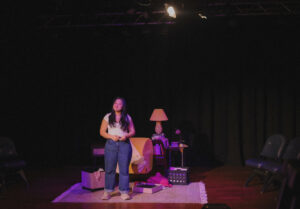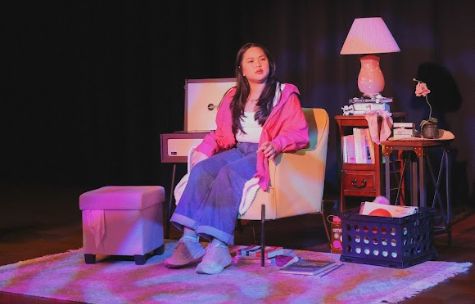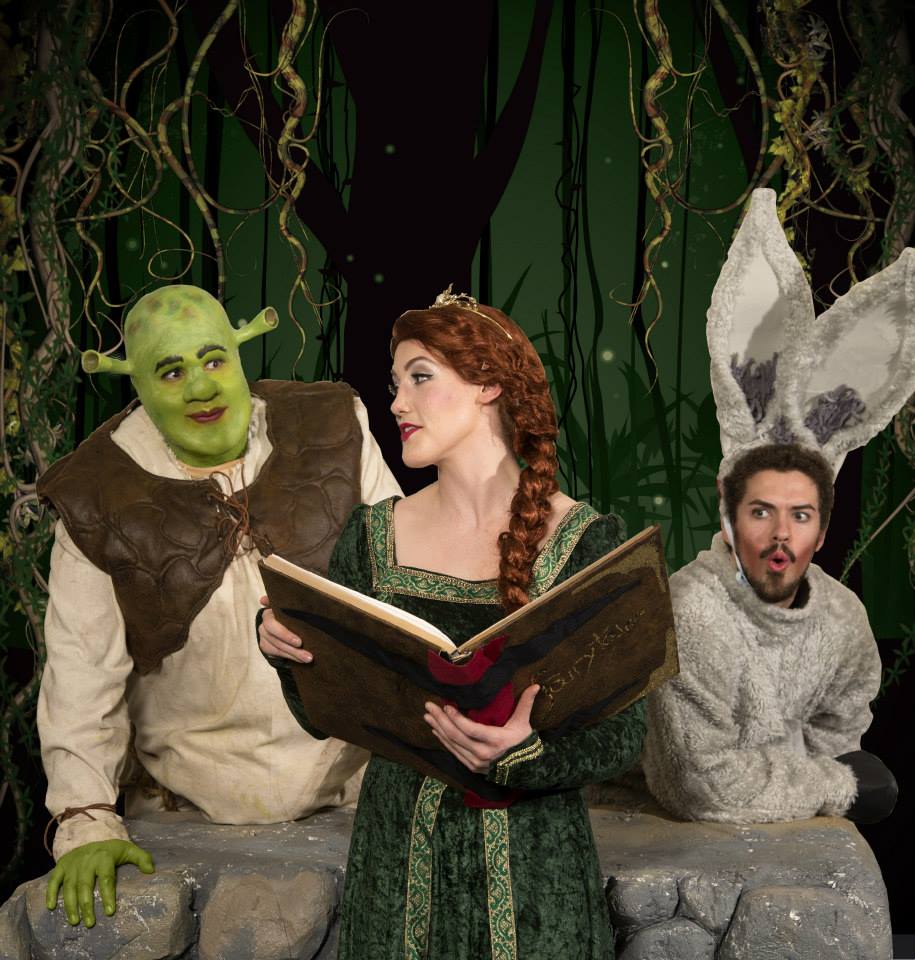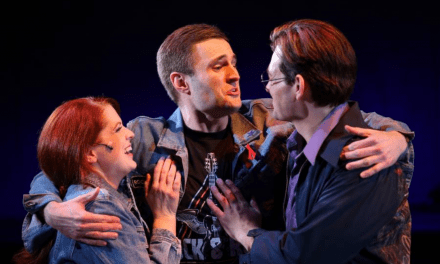PROVO — It is a brilliant thing to see something that is as wonderful as it is new. On Friday February 16, I attended Vicariously Staged Productions’ first show, the powerful single actor show Every Brilliant Thing by Duncan Macmillan with Jonny Donahoe. The show was set on the intimate 86-seat stage at The Hive Collaborative in Provo and was ideally suited for the poignant personal subject matter of the play. The story follows a fictional narrative of one person’s struggle being raised by mother whose attempted suicide leads the protagonist to begin creating a list of each brilliant thing they can think of, starting with ice cream. Through the 75-minute production, the protagonist ages, expands on the list, and engages audience members in critical moments from a life impacted by sorrow, but constantly seeking the sunshine of hope. While the story is not biographical, in many ways it speaks to the human conditions of sorrow, grief, and lacking understanding that are almost universally relatable.
This production’s solo performer was Mari Joy Asiado, who utilized the script’s flexibility to bring her Filipino heritage to the character and key moments in the play. There’s a moment when the character talks about getting a piece of bad news, and Asiado made reference to being out by Mandani Bay when she got the call. When she found an audience member to play her father, she discussed her father being Filipino, and her personal touch on the play added a human element to the production that increased the audience connection. Asiado had the arduous task of keeping being the engine behind an emotionally taxing solo performance for over an hour, and she did so incredibly well. Asiado more than lived up to the praise the script has received so much acclaim for and I look forward to seeing her grace more Utah stages.

Vicariously Staged Productions of “Every Brilliant Thing” plays through Feb 17 at The Hive Collaborative in Provo. (Photo: Bea Albino)
I’ve seen this show three times, including twice this week as the Utah Shakespeare Festival toured their production to students at my school. The play draws heavily on audience interaction as the solo performer finds audience members to play the vet who puts down her beloved childhood dog, a school counselor who helps her cope with tragedy using a sock puppet, and even the love interest, Sam, with whom she swaps books. Asiado’s ability to navigate these moments was so engaging that audience members willingly took off their socks, proposed marriage and even gave a moving speech. At one point, the audience was so filled with communitas from the performance, that they spontaneously sang along to Marvin Gaye’s “Ain’t No Mountain High Enough” as Asiado continued to list brilliant things.
Being a visiting company in another space can be incredibly difficult to do well, but the technical elements were strong across the board. Taylor Tew Nelson’s lighting design utilized ambient lighting well to keep the mood airy, except in pointed moments when the stage would dim as depression closed in around Asiado’s character. The choices with light set tone throughout and helped the actor and audience navigate complex subtext with lighting choices that helped tell the story. Similarly, Glenna Andersen’s scenic design, which audience members were invited to examine up close after the performance, was full of nuance. Handwritten notes, a beautiful collection of records, a squishy yellow chair, and some fitting books on an end table helped make the small stage feel like home.
The play follows the performer from 7 year s old to a teenager and into adulthood. Asiado made strong physical choices in terms of posture, gait and demeanor to convey these changes in stage of life. This was accented by the simple but effective choice to remove layers of pink from the costume; a floppy pink bow as she transitioned from child to teen and the removal of a jacket as she progressed into womanhood. This was part of an effective design from director Skyler Denfeld’s creative team that was very successful.
Denfeld’s work in the production enabled little moments to land. There were several tableaus that stuck with me, such as Asiado listening to a vinyl recording of “Here Comes the Sun” as a light shines warmly on her face. The production had dynamic pacing throughout. At times, Asiado would joyously blitz through lists of brilliant things while dancing around the stage, and at other times, the staging allowed the audience to hold its collective breath along with the character. The ability to switch between these emotions suddenly is a credit to Denfield as a director who works with a creative team to understand what the realization of this script looks like in the moment and then allow the individual components to come together harmoniously.
By the time this review is published, this fleeting Vicariously Staged Productions Every Brilliant Thing will be a thing of the past. What is here to stay, however, is a new theatre company with talented and creative people sharing work that I celebrate.

This review was generously sponsored by a grant from the Provo City Recreation, Arts, and Park (RAP) grant.





